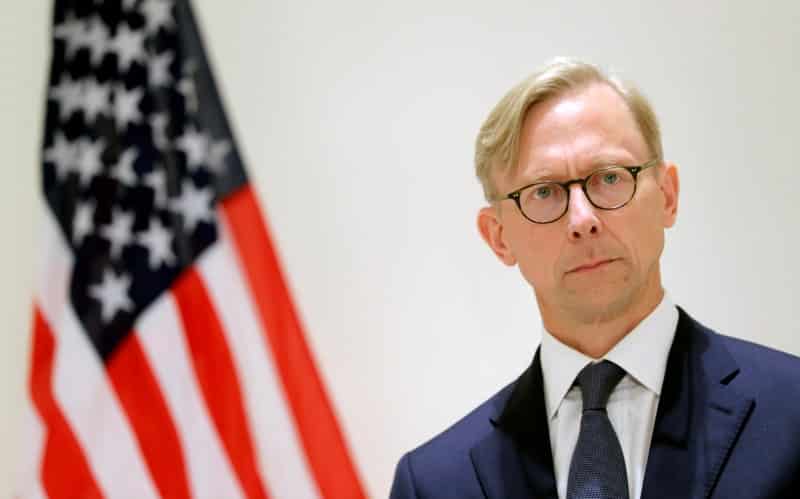The successor to the Iranian commander killed in a U.S. drone strike would suffer the same fate if he followed a similar path by killing Americans, the U.S. special representative for Iran said, according to Asharq al-Awsat newspaper.
Washington blamed Qassem Soleimani for masterminding attacks by Iran-aligned militias against U.S. forces in the region. U.S. President Donald Trump ordered the Jan. 3 drone strike in Iraq after an escalation that began in December with missile strikes that killed an American contractor, which Washington blamed on an Iran-aligned militia in Iraq.
Iran responded to the killing of Soleimani by launching missiles at U.S. targets in Iraq on Jan. 8, although no U.S. soldiers were killed.
After Soleimani’s death, Tehran swiftly appointed Esmail Ghaani as the new head of the Quds Force, an elite unit in the Revolutionary Guards that handles actions abroad. Ghaani has pledged to pursue Soleimani’s course.
“If (Esmail) Ghaani follows the same path of killing Americans then he will meet the same fate,” U.S. envoy Brian Hook told the Arabic-language daily Asharq al-Awsat.
He said in the interview in Davos that Trump had long made it clear “that any attack on Americans or American interests would be met with a decisive response.”
“This isn’t a new threat. The president has always said that he will always respond decisively to protect American interests,” Hook said. “I think the Iranian regime understands now that they cannot attack America and get away with it.”
After his appointment, Ghaani said he would “continue in this luminous path” taken by Soleimani and said the goal was to drive U.S. forces out of the region, Iran’s long stated policy.
The Revolutionary Guards aerospace commander said four U.S. military bases in the region were used to deploy aircraft and drones that played a role in the Jan. 3 attack that killed Soleimani, including two bases in Iraq and another in Kuwait.
“Most of the drones” had taken off from Kuwait, Amirali Hajizadeh, who heads the Guards’ aerospace unit, told state television, although he did not say if a drone from Kuwait was ultimately responsible for attack on Soleimani.
Tensions between Washington and Tehran have steadily increased since Trump withdrew from Iran’s nuclear deal with world powers in 2018 and imposed tough news sanctions that have hammered the Iranian economy.
This month’s military flare-up began in December when rockets fired at U.S. bases in Iraq killed a U.S. contractor. Washington blamed pro-Iran militia and launched air strikes that killed at least 25 fighters. After the militia surrounded the U.S. embassy in Baghdad for two days, Trump ordered the drone strike on Soleimani.
(Reporting by Nafisa Eltahir and Parisa Hafezi; Writing by Edmund Blair; Editing by Michael Perry and Peter Graff)

























 Continue with Google
Continue with Google